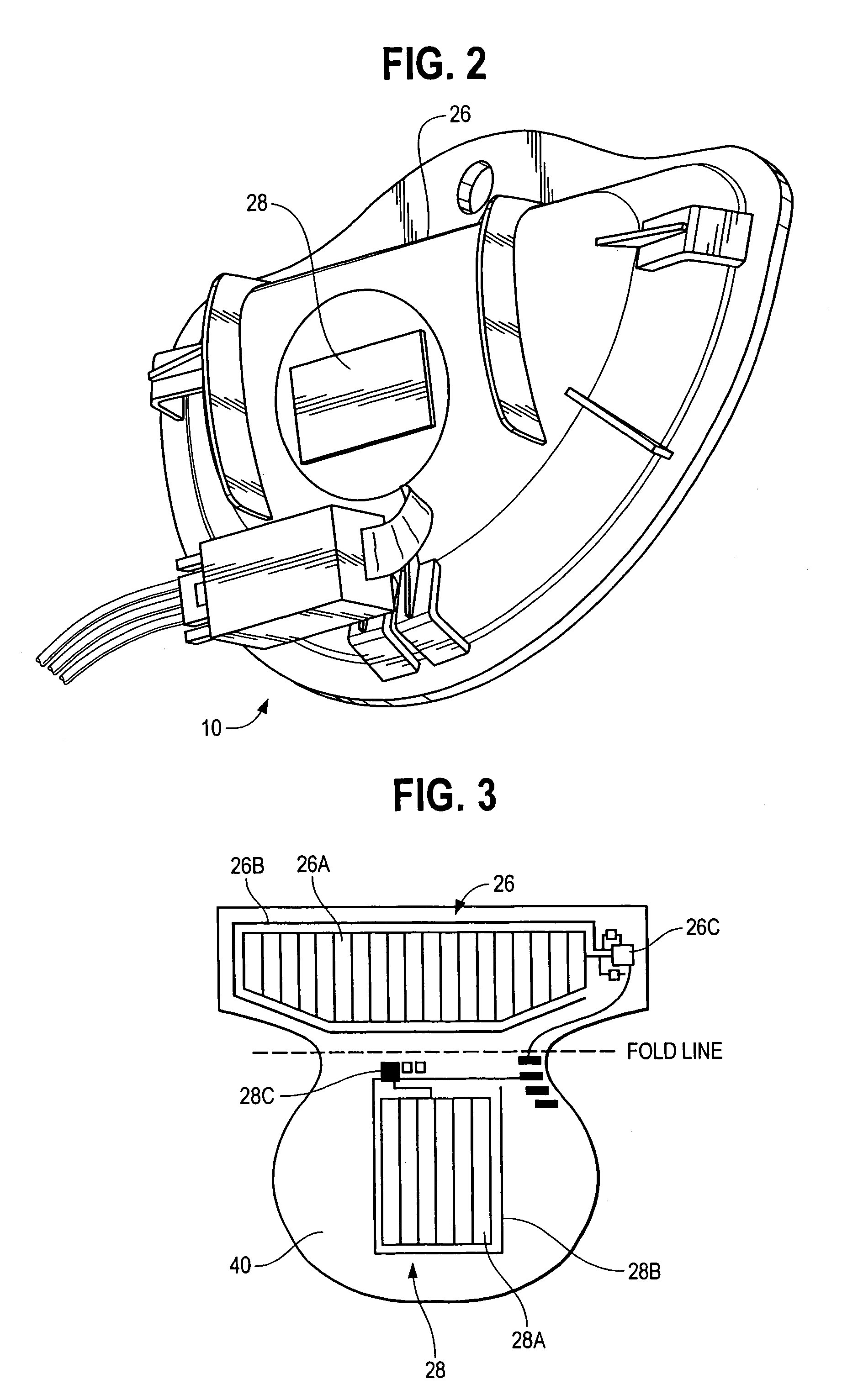Electronic door latch system with water rejection filtering
a technology of electronic control system and door latch, which is applied in the direction of electrical locking circuit, anti-theft device, pulse technique, etc., can solve the problems of conventional field effect sensor not ideally suited for harsh environments, failure of switch, and inoperable membrane switch
- Summary
- Abstract
- Description
- Claims
- Application Information
AI Technical Summary
Benefits of technology
Problems solved by technology
Method used
Image
Examples
Embodiment Construction
[0014]FIGS. 1A and 1B illustrate a handle shell 10 as be would installed in a lift-gate or door of an automobile. Shell 10 includes a substantially flat portion 12, a substantially curved portion 14 and a lip 16, wherein flat portion 12 defines an upper surface 18 and a lower surface 20, curved portion 14 defines a concavity 20 having an outer surface 20 and an inner surface 22, and lip 16 defines a rear surface 24. Shell 10 typically would be installed with flat portion 12 oriented toward the top of the lift gate or door and curved portion 14 oriented toward the bottom of the lift gate or door. Shell 10 typically would be configured to receive a person's hand, with palm facing away from shell 10, such that the person's fingertips would extend to lower surface 20 of flat portion 12 and rear surface 24 of lip 16.
[0015]Referring to FIG. 2, a first field effect sensor, or touch sensor, 26 is positioned on upper surface 18 of flat portion 12. As discussed below and illustrated in FIGS. ...
PUM
| Property | Measurement | Unit |
|---|---|---|
| time | aaaaa | aaaaa |
| time | aaaaa | aaaaa |
| electric | aaaaa | aaaaa |
Abstract
Description
Claims
Application Information
 Login to View More
Login to View More - R&D
- Intellectual Property
- Life Sciences
- Materials
- Tech Scout
- Unparalleled Data Quality
- Higher Quality Content
- 60% Fewer Hallucinations
Browse by: Latest US Patents, China's latest patents, Technical Efficacy Thesaurus, Application Domain, Technology Topic, Popular Technical Reports.
© 2025 PatSnap. All rights reserved.Legal|Privacy policy|Modern Slavery Act Transparency Statement|Sitemap|About US| Contact US: help@patsnap.com



